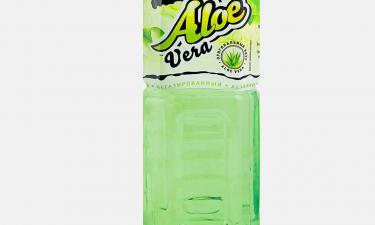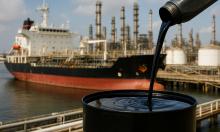Diseases break out on Solomon Islands
Diarrhea has broken out among children on the Solomon Islands, adding urgency to relief efforts that were hampered by shortages and logistics.

Aid trickled in _ among the first shipments from the capital, Honiara, included tarpaulins, lanterns and a medical team _ but much of it ran into a bottleneck before reaching Gizo, the largest town in hard-hit Western Province, where at least 2,000 people spent a third unsheltered night since Monday's earthquake and ocean surge.
The town on the Pacific Island nation's northwestern tip was reachable by boat and helicopter but was cut off to wheeled vehicles and relief planes, the first of which landed late Tuesday at nearby Munda, a three-hour boat journey away.
The Solomons are comprised of more than 200 islands with a population of about 552,000 people.
Destroyed smaller villages further afield are even more cut off, and getting the first aid to them could take two more days at least, Solomons officials said.
Among survivors living under tarpaulins or woven grass mats, frustration started to show.
"There's no water to wash, no water to drink," said Esther Zekele, who fled on Monday with her husband and five children to high ground behind Munda. The single sack of rice they brought with them is half-empty, and no aid official had come to their makeshift camp.
"We are just waiting, wondering why they haven't come," she said.
A New Zealand military transport plane unloaded a shipment of tarps, water and food rations at Munda late Tuesday, after a single police patrol boat carrying similar supplies arrived. A team of six doctors and 15 nurses reached Gizo on Wednesday.
A second supply boat left Honiara on Wednesday evening for the 10-hour journey to Gizo, but two others were delayed because provisions could not be found in the capital to fill them, chief government spokesman Alfred Maesulia said.
The United States donated $250,000 (Ђ187,150) to support humanitarian organization providing shelter, health, water and sanitation in the aftermath of the Solomons disaster. State Department spokesman Sean McCormack offered condolences to the Solomons' people and government and said the U.S. ambassador had expressed U.S. sympathy and offered help to the Solomon Islands government.
Officials conceded the relief effort was slow, but said problems included the remoteness of the stricken region and damage to airstrips, roads and wharves.
"We have not reached people as soon as we could ... because of the widespread nature of this particular disaster," said Fred Fakarii, chairman of the National Disaster Management Council.
Making things worse, many canoes and other boats usually used to traverse the island region's waterways were washed away or destroyed, and fuel was contaminated with sea water, Western Province Premier Alex Lokopio said.
Red Cross official Nancy Jolo said the risk of disease was rising in the largest camp, behind Gizo.
"What we are experiencing right now in some of the campsites is children starting to experience diarrhea," Jolo told Australian Broadcasting Corp. radio, warning that it could easily become widespread.
Fakarii said medical staff at Gizo had been overwhelmed by injuries and feared diseases such as diarrhea, cholera and malaria could break out because of the unhygienic conditions and lack of clean water and fresh food.
"The conditions at Gizo are such that these are likely things to happen unless action is taken quickly," Fakarii told The Associated Press.
Survivors terrified by the more than 50 jolts that have struck the region since the magnitude 8.1 quake _ including several registering 6 or stronger _ were too scared to come down from high-ground refuges. Some have been driven even further into the hills in panic because of the aftershocks, said deputy police commissioner Peter Marshall.
At one camp near Munda town, men perched on a hilltop peered out to sea with binoculars keeping watch for another deadly wave.
"I'm too scared to go home," said Winnie Tava, 32, whose house was nearly destroyed by Monday's tremor.
She and her husband grabbed their three small children and a few of their belongings and headed for high ground, where they were joined by about 40 other families in a camp about 200 meters (650 feet) above sea level.
The family sleeps on a plastic sheet under a tarpaulin stretched between two wooden poles. They have a single aluminum pot for cooking rice, and a kerosene lantern.
"When there's no more kerosene, no more light," she said.
At least 28 people were killed, and authorities were checking unconfirmed reports of further deaths, including six people buried in a quake-triggered landslide on Simbo island, Prime Minister Manasseh Sogavare's office said.
"We're bound to have an increase as time goes by," Marshall said, referring to the death toll. But he said authorities were somewhat relieved that aerial surveillance flights over the stricken coast had revealed "no evidence of mass deaths ."
Monday's 8.1-magnitude quake struck 10 kilometers (6 miles) under the sea about 40 kilometers (25 miles) from Gizo, and set off alarms from Tokyo to Hawaii amid fears of a repeat of the 2004 Indian Ocean tsunami that left 230,000 dead or missing in a dozen countries.
No significant tsunami was reported Monday anywhere outside the Solomons.
Subscribe to Pravda.Ru Telegram channel, Facebook, RSS!




